#Science illustration
Text

Various scaled reptiles. The life of vertebrates. 1962.
Internet Archive
282 notes
·
View notes
Text
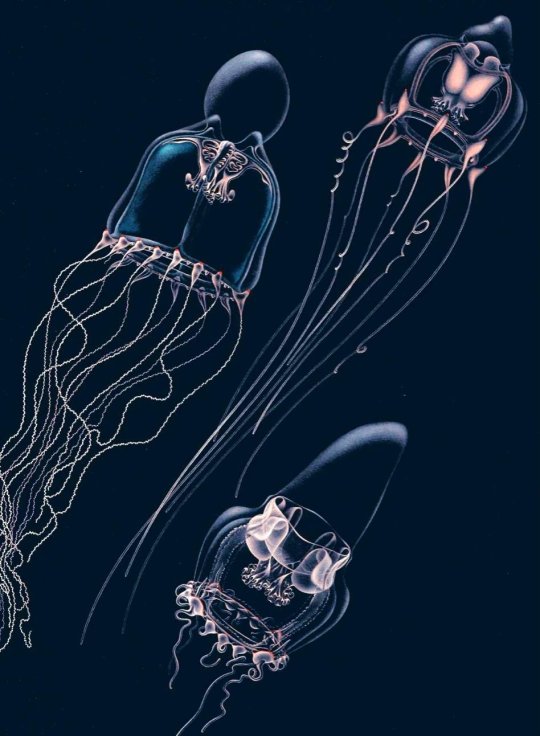
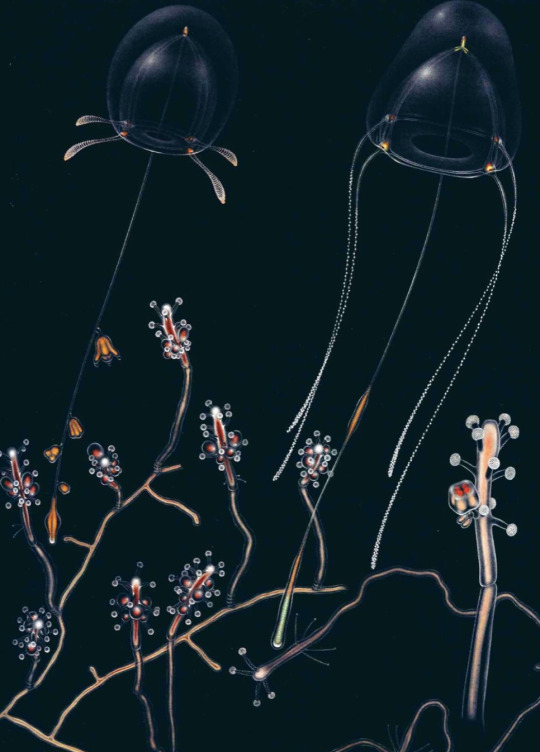

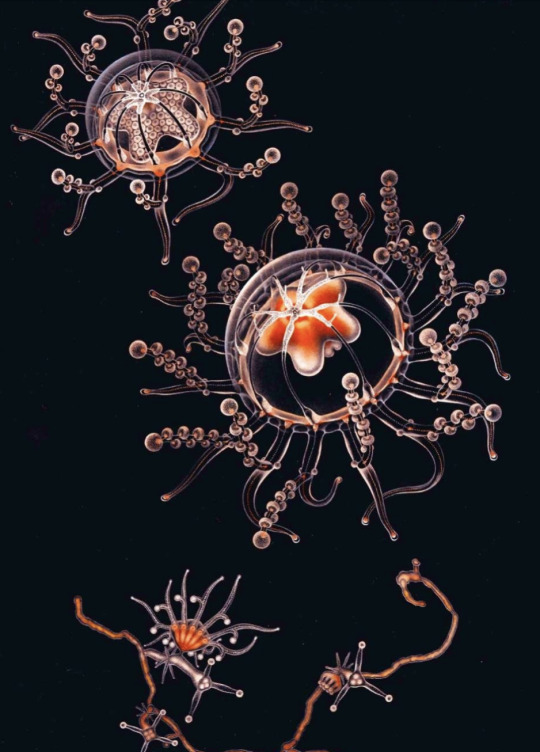

The lost jellyfish art of Ilona Richter, from Anita Brinckmann-Voss's 1970 book on jellyfish of the Mediterranean Sea...
#marine life#nature#ocean#science#illustration#science illustration#jellyfish#sea creatures#jellies#iridescent
4K notes
·
View notes
Text
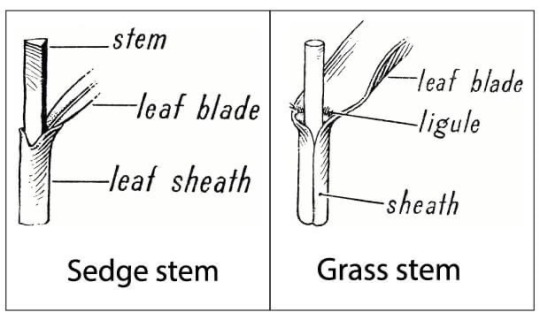
I’m sorry, but some of y’all really need to see this…
3K notes
·
View notes
Text

The mancallines were a lineage of flightless semi-aquatic birds closely related to auks. Known from the Pacific coasts of what are now California and Mexico, between about 7.5 and 0.5 million years ago, they convergently evolved a close resemblance and similar lifestyle to both the recently-extinct North Atlantic great auk and the southern penguins.
Miomancalla howardi here lived in offshore waters around southern California during the late Miocene (~7-5 million years ago). The largest of the mancallines, it just slightly beat out the great auk in size – standing around 90cm tall (~3') and weighing an estimated 5kg (11lbs).
Like great auks and penguins it would have been a specialized wing-propelled diver, swimming using "underwater flight" to feed on small bait fish. It probably spent much of its life out at sea, probably only returning to land to molt and breed.
———
NixIllustration.com | Tumblr | Patreon
#science illustration#paleontology#paleoart#palaeoblr#miomancalla#mancallinae#pan-alcidae#auk#charadriiformes#bird#dinosaur#art#convergent evolution
587 notes
·
View notes
Text
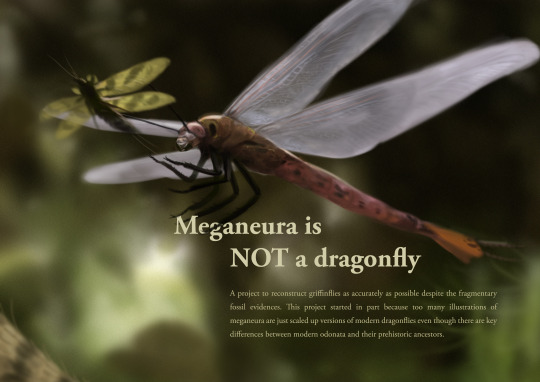
some illustrations about Meganeura and how much we know about its anatomy based on fossil fragments and close relatives
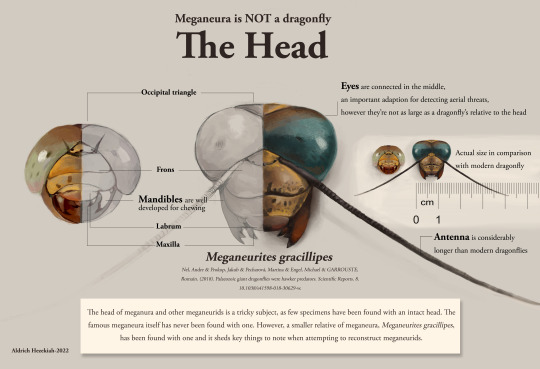


links
#meganeura#odonatoptera#carboniferous#permian#insect#paleoart#paleo art#paleontology#science illustration#illustrationdigital
2K notes
·
View notes
Text
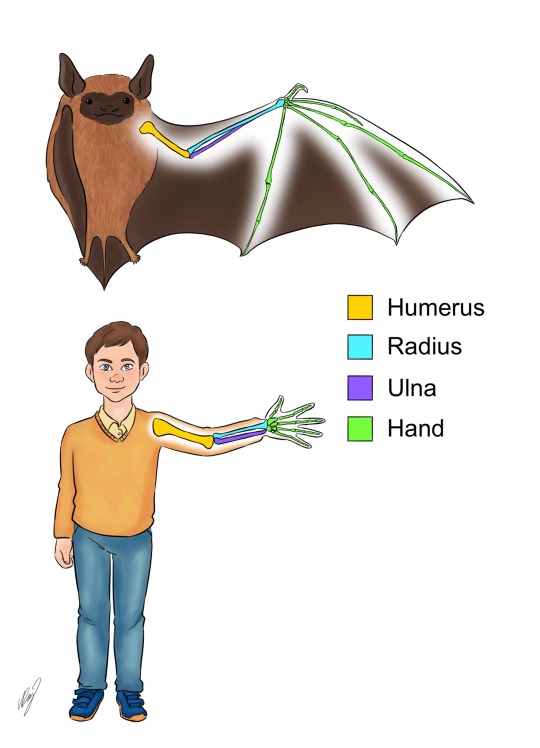
Bat and human arm bones~
I figured it’d be something to help a child visualise the similarities
65 notes
·
View notes
Text

NEW PRINT!
A fantastical, retro-futuristic laboratory for black hole research. Originally created for The Institute for Advanced Study – The Institute Letter.
The graphics on the small screens represent real black hole characteristics: Kerr black holes, donut-shaped accretion disks, gravitational effects, binary systems & more.
Credit: Olena Shmahalo for The Institute for Advanced Study
#natureintheory#olena shmahalo#sciart#science illustration#illustration#physics#art#artists on tumblr#digital artist#human artists#portfolio#2022#science#astrophysics#astronomy#scifi#science fiction#steampunk#fantasy art#scifiart#black hole#space#celestial#stars
165 notes
·
View notes
Text

Sedimentologist, Natacha Fabregas, using a microscope to check grain size
#portrait#portrait art#kells art#chalk#chalk pastel#chalk art#art#scicomm#science illustration#science art#science#illustration
60 notes
·
View notes
Text

Repostober 7: He stretch his leggy out real far! Anchiornis from 2018, a piece from grad school.
86 notes
·
View notes
Photo

“Teeth of Wolf. Natural size.” British animals extinct within historic times: with some account of British wild white cattle. James Edmund Harting. 1880.
#wolf teeth#wolf#wolves#animal teeth#taxidermy#teeth#teeth illustration#illustration#line drawing#vintage illustration#vintage book#biology#life science#animals#animal illustration#science illustration
1K notes
·
View notes
Text
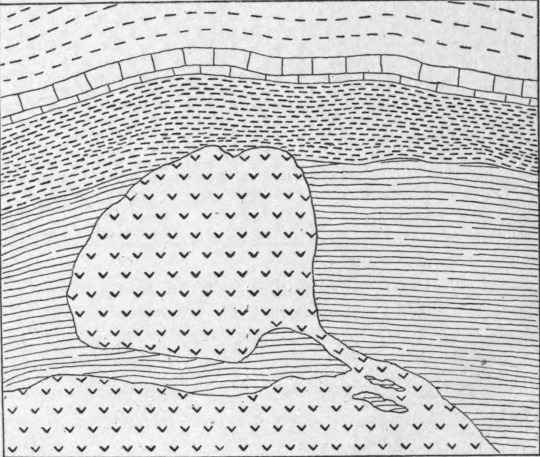
"Replacement of sediments by Cauterets granite." Igneous rocks and their origin. 1914.
Internet Archive
68 notes
·
View notes
Photo

Common Yellowthroat & Leatherleaf
#Common Yellowthroat#leatherleaf#bird#warbler#nature#wildlife#illustration#animal#passerine#art#drawing#design#jada fitch#maine artist#maine illustrator#science illustration#botanical illustration#wildflower#bog#wood warbler#Geothlypis trichas#Chamaedaphne calyculata#plant#pen and ink
266 notes
·
View notes
Photo

from Science diagrams that look like shitposts.
1K notes
·
View notes
Text

The tuzoiids were an enigmatic group of Cambrian invertebrates known mostly just from their spiny bivalved carapaces. Although hundreds of fossils of these arthropods were discovered over the last century or so, only vague fragments of the rest of their bodies have been found even in sites usually known for preserving soft tissue impressions.
…Until late 2022, when several new specimens from the Canadian Burgess Shale deposits (~508 million years ago) were described showing tuzoiid anatomy in exceptional detail, finally giving us an idea of what they looked like and where they fit into the early arthropod evolutionary tree.
Tuzoiids like Tuzoia burgessensis here would have grown up to about 23cm long (~9"). They had large eyes on short stalks, a pair of simple antennae, a horizontal fluke-like tail fan, and twelve pairs of appendages along their body – with the front two pairs at the head end being significantly spinier, and most (or all) of these limbs also bearing paddle-like exopods.
The large carapace enclosed most of the body, and was ornamented with protective spines and a net-like surface pattern that probably increased the strength of the relatively thin chitinous structure.
Together all these anatomical features now indicate that tuzoiids were early mandibulates (part of the lineage including modern myriapods, crustaceans, and insects), and were probably very closely related to the hymenocarines.
Tuzoiids seem to have been active swimmers that probably cruised around just above the seafloor, with their stout legs suggesting they could also walk around if they flexed their valves open. The arrangement of their spiny front limbs wasn't suited to grabbing at fast-swimming prey, but instead may have been used to capture slower seafloor animals or to scavenge from carcasses.
———
NixIllustration.com | Tumblr | Twitter | Patreon
#science illustration#paleontology#paleoart#palaeoblr#tuzoia#tuzoiidae#hymenocarina#mandibulata#arthropod#invertebrate#cambrian explosion#art#MYSTERY TACO
2K notes
·
View notes
Text
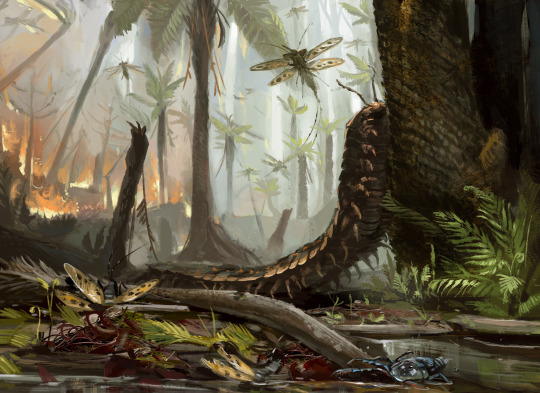
Old illustration from 2018
Arthropleura and friends running away from a carboniferous forest fire
#arthropleura#carboniferous#megarachne#eurypterid#palaodictyoptera#fossil insect#illustrationdigital#science illustration#illlustration#paleo art#paleoart
2K notes
·
View notes
Text
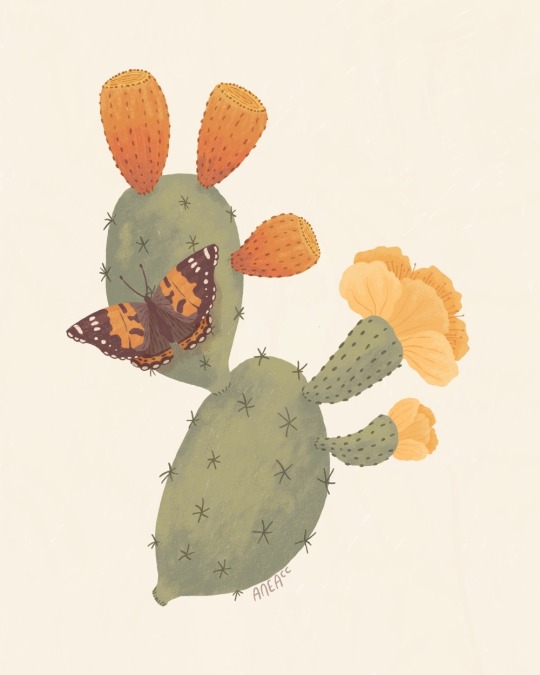
It’s Cactus garden time for the #juneinbloom2022
This one is quite personal because it’s a bit representative of the region where I live in, La palma, a small heart shaped island from the Canary Islands. Its what we call a”tunera” a prickly pear cactus in bloom and with some fruits (yummy), and an endemic butterfly called Vanessa vulcania or the Canary red admiral.
#butterflies#butterfly#prickly pear#botanic illustration#science illustration#cactus#succulents#bugs#insects#aneacc#my art#digital illustration#illustration#illustrations#artists on tumblr#procreate#juneinbloom2022
891 notes
·
View notes